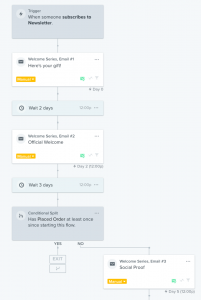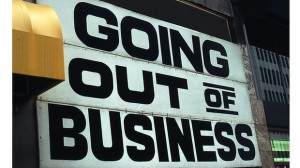Ah, social media. Arguably the greatest and most revolutionary tool in contemporary marketing, it has the potential to make or break your business while also minimising your spend on promotional campaigns. The social platform can also serve as the glue that binds an integrated marketing campaign together, driving both engagement and sales conversions in equal measure.
While social channels may enable you to market your brand to a global audience, however, the question that remains is how to create a targeted and effective message for each individual campaign?
How to create the perfect social message on Facebook, Twitter and LinkedIn
In terms of answering this, it is important to note that posting inappropriate or irrelevant content remains one of the biggest mistakes that you can make on the social platform. To negate this and optimise the effectiveness of your messaging, you will need to tailor specific formats and content for staple channels including Facebook, Twitter and LinkedIn.
So, here are the crucial considerations when crafting social messages for these individual outlets: –
While Facebook’s global user base may be close to reaching its saturation point, it continues to increase on an annual base. There are now in excess of one billion unique Facebook users across the globe, with the estimated number of users in the U.S expected to reach 169.2 million by the year 2018. The sheer size of this market makes Facebook as staple social media marketing channel, although it also means that your messaging must be targeted and well-defined.
Start by considering the way in which you structure your content and core messaging, as Facebook posts with imagery and embedded videos tend to perform better in terms of engagement. Make sure that your images (and logos) are optimised in terms of size and resolution, with 472px x 374px the standard composition for newsfeed graphics and icons.
In terms of written copy, there is no limitation of Facebook posts so you will need to write with clarity and a clearly defined value proposition. It is important to keep your message concise and single-minded, however, using a short and impactful call to action (CTA) to introduce a sense of urgency. You can also reinforce this by creating messages in an active rather than a passive tense, as this compels consumers to act rather than simply encouraging them.
On a final note, strive to include one or two shortened links in your social posts. These can make a specific CTA actionable while also helping you to track the effectiveness of your messaging.
From a technical perspective, Twitter is the hardest social platform through which to master messaging and content scheduling. Given this and the channel’s dwindling unique user growth, you may be tempted to sideline the site as a marketing resource.
This would be a mistake, however, as Twitter still has huge leverage as a real-time engagement tool. When it comes to crafting precise messages for the channel, you must aim to keep your content to a strict limit of 100 characters or less. While Twitter allows for a maximum of 140 characters per publication, it is wise to allow 20 for a concise bit.ly link which is both trackable and capable of driving traffic to a relevant and strategically selected landing page on your website.
This then leaves 20 additional characters for the purpose of re-tweeting, empowering those who share your message socially to add their own input and content.
While the concise nature of Twitter posts may encourage you to bend grammatical rules to ensure that your message fits the available space, this is to be avoided at all costs. In fact, you should do the opposite of this, focusing on the skilful creation of impactful messaging that is well-written and grammatically correct. This is central to the credibility of your brand, especially if you want to adhere to a predetermined tone of voice.
Finally, you must consider two crucial rules when aiming to optimise engagement. Firstly, limit the use of hashtags to one or two per post, while ensuring that you select relevant descriptions which are targeted at specific followers. You must then schedule your posts and messages in order to capture your chosen audience in real-time, as otherwise your target market may miss the post as it quickly becomes lost among a plethora of live publications.
While it is a relatively large social channel, LinkedIn is far more niche in terms of its audience and the type of content that it publishes. What many people don’t realise, however, is that LinkedIn is also a niche channel in terms of age range, so it is important that you adopt a precise and targeted approach before posting content here.
Although there is a relatively even split in terms of male and female users (56% and 44% respectively), 69% of all LinkedIn users are aged between 24 and 54. While this should come as no surprise given the professional and career-focused nature of the channel, it is worth addressing whether your target audience is active on the site before creating your message.
When creating your LinkedIn content, it goes without saying that you should focus on topical and industry-focused topics which will appeal to professionals. Additionally, you should also aim to centre your messaging around breaking news and events, tailoring content that is driven by insight and leads skilfully into timely updates around your brand.
The publication of an active and clear CTA is also imperative on LinkedIn, while the channel’s audience also responds well to direct questions posted at the end of the content.
Concise messaging is also crucial on LinkedIn, whether you are creating an attention-grabbing profile or sharing marketing content. Adhere to single theme in your description, for example, while also keeping your link title to 70 characters or less in order to capture the reader’s attention and drive instant engagement.
So here we have it; several simple ways to optimise your messaging across social channels such as Facebook, Twitter and LinkedIn. If you have any further thoughts, feel free to let us know in the comments box below!
Digital & Social Articles on Business 2 Community(71)
Report Post







